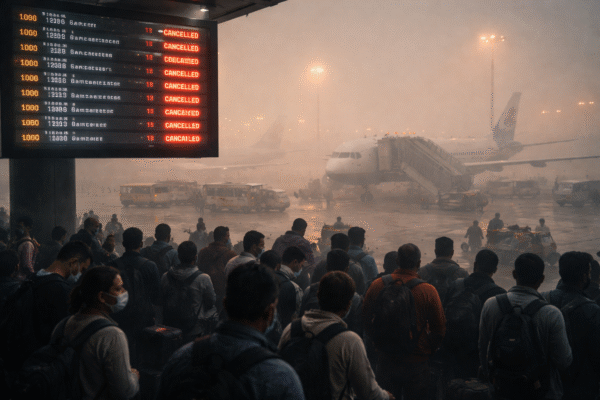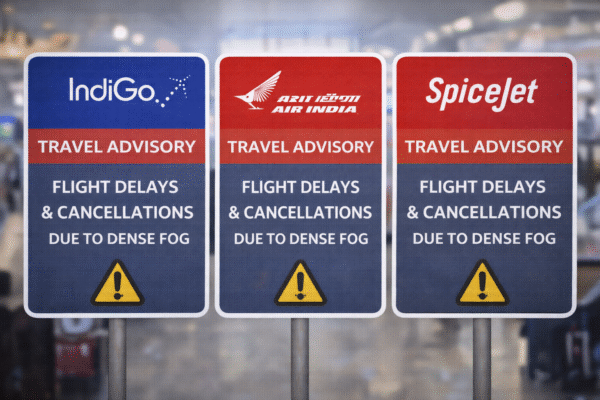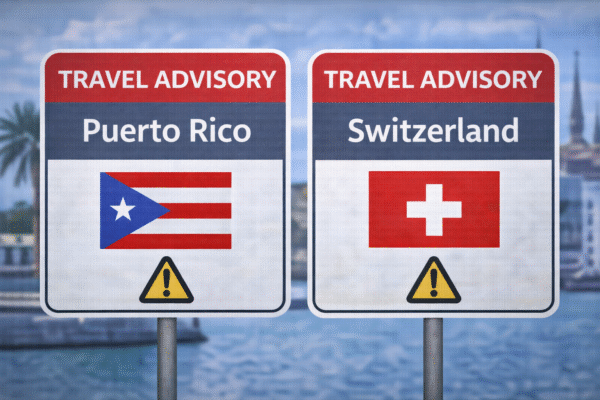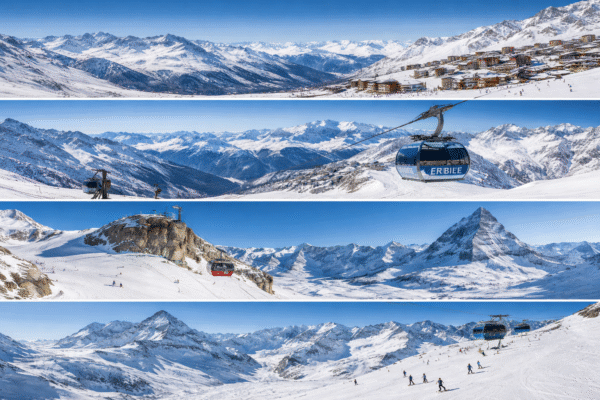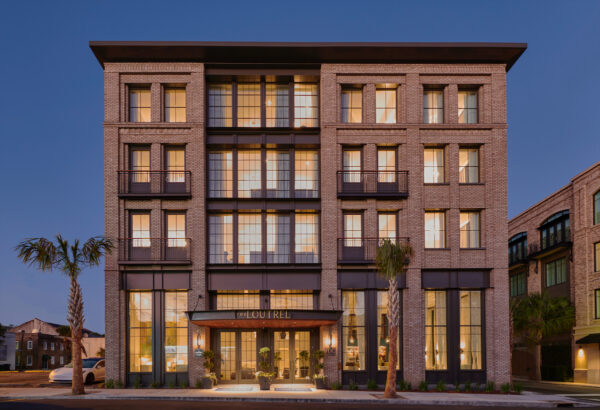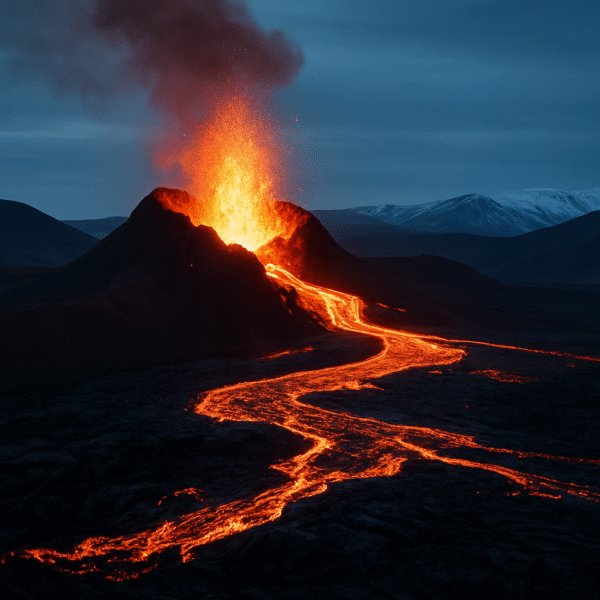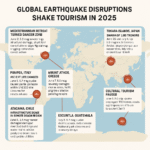For the ninth time in under two years, Iceland’s Reykjanes Peninsula has experienced another volcanic eruption, intensifying interest in the region while raising concerns over safety for both residents and international tourists. Early Wednesday morning, lava emerged from a new fissure near Sundhnúkagígar, about 2 kilometers long, marking the latest development in Iceland’s active volcanic cycle.
While the eruption is considered small by geological standards, the incident has prompted renewed safety warnings due to worsening air quality and the unpredictability of seismic activity in the area. The Icelandic Meteorological Office (IMO) continues to monitor the situation closely, emphasizing that while the eruption does not currently threaten populated areas, conditions can shift rapidly in such dynamic environments.
Why the Reykjanes Peninsula Is Under Watch
The Reykjanes Peninsula, located southwest of Iceland’s capital Reykjavík, sits atop the Mid-Atlantic Ridge, making it a prime location for volcanic activity. Since late 2019, scientists have recorded a reawakening of this region’s volcanic systems, with the most recent series of eruptions starting in December 2023. The latest eruption, although relatively moderate, serves as a reminder that this part of the island is undergoing a geologic renaissance.
“This eruption is part of a pattern, not a one-off event,” said Benedikt Ófeigsson, geophysicist with the Icelandic Meteorological Office. “The fissure is around 2 kilometers long and while ground deformation is currently limited, it’s too early to assess the long-term impact.”
Iceland has a long and storied history of eruptions. In fact, about 30 active volcanic systems exist throughout the country. While not uncommon, the frequency of activity in Reykjanes has made it a focal point for scientific research, as well as for tourism.
Air Quality Alerts: What Visitors Should Know
While air travel to and from Iceland remains unaffected, the air quality in areas downwind of the eruption has deteriorated. The IMO and Iceland’s Directorate of Health have issued advisories for residents and tourists in affected areas like Grindavík to stay indoors and avoid strenuous outdoor activities.
Sulfur dioxide (SO₂), a toxic volcanic gas, poses the primary concern, particularly for individuals with respiratory issues. Authorities recommend that anyone in the vicinity close windows and use N95 masks when necessary. Real-time air quality updates are available on loftgaedi.is, Iceland’s national air quality monitoring website.
Are Tourist Destinations Still Open?
Despite the ongoing volcanic activity, Iceland remains open for tourism. Most of the country’s major attractions — including Reykjavík, the Golden Circle, and iconic spots like Gullfoss waterfall and Þingvellir National Park — are far from the eruption site and continue to operate normally.
The Blue Lagoon, Iceland’s popular geothermal spa located just 20 kilometers from the active fissure, has temporarily closed as a precaution. Tourists are advised to check local news and the Icelandic Tourist Board for the latest updates on site closures and safety advisories.
Safety Tips for Tourists Visiting Iceland During Volcanic Activity
If you’re planning a trip to Iceland soon or are already there, it’s essential to take certain precautions to ensure your safety:
- Stay Informed: Follow updates from the Icelandic Meteorological Office (en.vedur.is) and local authorities.
- Avoid Restricted Areas: Only enter volcanic zones with licensed guides. Venturing close to the eruption site without proper gear is dangerous.
- Monitor Air Quality: Be alert to changes in air quality, especially if you have asthma or other respiratory conditions.
- Have Travel Insurance: Ensure your insurance policy covers natural disasters, including flight delays or medical issues related to volcanic gases.
- Pack for Emergencies: Carry essentials like a flashlight, water, masks, and portable battery packs in case of evacuation orders.
Business Travel Considerations
Business travelers flying in or out of Iceland are unlikely to face significant disruptions. Keflavík International Airport (KEF), located about 15 kilometers from the eruption site, remains operational with enhanced monitoring.
However, if you’re hosting or attending events near the Reykjanes Peninsula, it’s wise to have contingency plans due to potential changes in air quality. The Icelandic Civil Protection Department continuously updates alert levels, so checking before departure is strongly recommended.
Volcano Tourism: Risk Meets Reward
Interestingly, the rise in volcanic activity has bolstered a niche market in Iceland — volcano tourism. Thrill-seeking travelers are eager to witness the raw power of nature, often booking guided tours to see lava flows and newly formed landscapes. The safe eruption zones have become dramatic backdrops for photographers and adventurers alike.
That said, this fascination must be balanced with respect for nature and adherence to safety rules. Iceland’s emergency services emphasize that while volcano viewing can be awe-inspiring, missteps in such volatile environments can be fatal.
A Country Shaped by Fire and Ice
Iceland’s dramatic natural beauty is forged by its dual elemental forces — fire and ice. Beyond its volcanic peaks, the country dazzles visitors with glaciers, black sand beaches, geothermal pools, and thundering waterfalls. While eruptions may dominate headlines, they are just one part of what makes Iceland a unique and unforgettable destination.
As the Reykjanes Peninsula continues to evolve, Iceland remains a safe and compelling country for travelers — provided they stay informed, follow safety guidance, and travel responsibly.
For more travel news like this, keep reading Global Travel Wire





